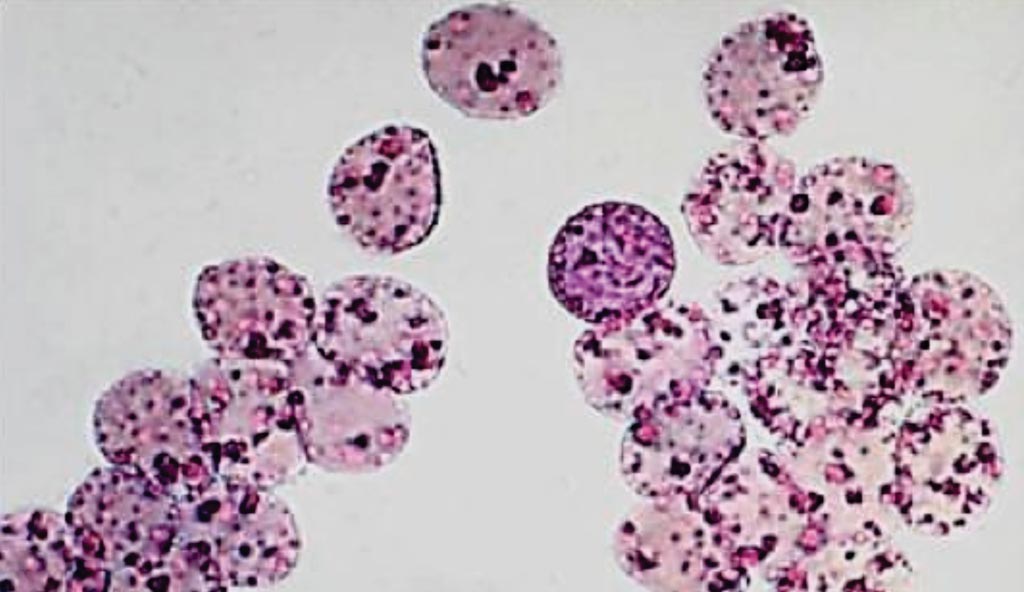Novel Flow Cytometry-Based Method Analyzes Heinz Bodies
By LabMedica International staff writers
Posted on 26 Jan 2017
Heinz bodies are inclusions within red blood cells (RBCs) that are composed of denatured hemoglobin molecules and are a highly sensitive indicator of in vivo oxidative stress. Heinz body formation has also been reported in chronic liver disease and α-thalassemia patient.Posted on 26 Jan 2017
Historically, light microscopes have been used to visualize specially stained Heinz bodies, which can be seen as spherical inclusions at the peripheries of RBCs. However, microscopic examination of Heinz bodies is time-consuming, labor intensive, and of low sensitivity.

Image: Heinz bodies in red blood cells from a patient with Glucose-6-phosphate dehydrogenase deficiency (Photo courtesy of the School of Medicine UC Davis).
Scientists at the Chulalongkorn University and their associates collected whole-blood samples from patients deficient in Glucose-6-phosphate dehydrogenase (G6PD) and healthy volunteers. The study's G6PD-deficient group included patients who had previously been diagnosed. These subjects were apparently healthy and ranged in age from 25 to 45 and none had ever experienced an acute hemolytic crisis or had experienced fever, inflammation, or infection.
Washed RBCs were incubated in the acetylphenylhydrazine solution at 37 °C. After incubating for one hour, the Heinz bodies were counted under a light microscope at ×100. G6PD enzyme activity was determined using the G6PD assay kit. Enzyme activity was determined using a temperature-regulated spectrophotometer by measuring the change in rate in absorbance at 340 nm. RBCs positive for Heinz bodies were examined using a FACSCanto II cytometer.
The investigators found that RBCs treated with acetylphenylhydrazine formed Heinz bodies and emitted a broad spectrum of fluorescence that could be detected by flow cytometry. The maximum emission of fluorescence was observed at 45 minutes after the incubation with acetylphenylhydrazine. In addition, the fluorescence emitted was stable for at least 72 hours. The flow cytometer could detect the RBCs positive for Heinz bodies even if they made up as little as 0.1% of the total RBC population. Furthermore, the percentage and number, respectively, of RBCs positive for Heinz bodies in G6PD-deficient patients and normal donors exhibited a mean ± standard deviation (SD) of 68.9 ± 27.5 versus 50.9 ± 28.6 and 96,014 ± 35,732 cells/μL versus 74,688 ± 36,514 cells/μL.
The author concluded that Heinz bodies induced by acetylphenylhydrazine emit fluorescence, and this fluorescence could be examined using flow cytometry. Their study suggests the potential use of the developed method to investigate the formation of Heinz bodies in clinical samples. The study was published on January 16, 2017, in the International Journal of Laboratory Hematology.












